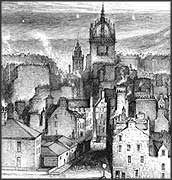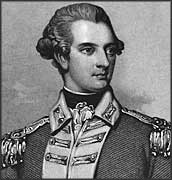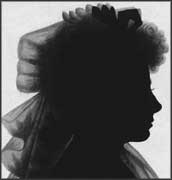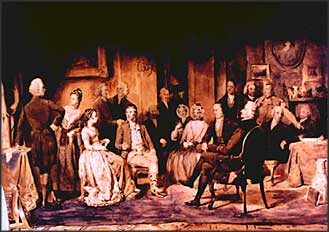Edinburgh
Following the success of the Kilmarnock edition, Robert Burns decided to further his literary ambitions by visiting Edinburgh.
Soon he was being fêted by an Edinburgh society eager to meet the man described by Henry Mackenzie as the 'Heaven-taught ploughman'.
For the next 18 months he stayed frequently in Edinburgh to arrange the publication of a second edition of his poems, and to join in the social round.
He first lived in Baxter's Close, off the Lawnmarket, and later in the newly built St James Square, at the east end of the New Town.
Clarinda and Sylvander
One of the people Burns met was Mrs Agnes McLehose, with whom he established a platonic relationship. Their ensuing correspondence — using the pseudonyms 'Clarinda' and 'Sylvander' — is one of the most famous examples of stylised romantic letter-writing.
But even more famous is 'Ae fond kiss', the parting song which Burns sent to Mrs McLehose after their final meeting in December 1791.





By permission of the National Galleries of Scotland.

By permission of the National Galleries of Scotland.
— Autobiographical letter to Dr John Moore, London, 2 August 1787: part of the Cowie Collection'At Edinr I was in a new world. I mingled among many classes of men, but all of them new to me; and I was all attention "to catch the manners living as they rise".

